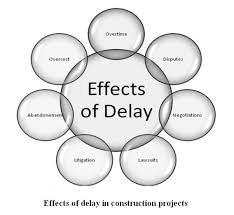 All projects run into change orders and delays. We also need to measure and track progress against the original plan. Baseline Schedules are necessary for this.
All projects run into change orders and delays. We also need to measure and track progress against the original plan. Baseline Schedules are necessary for this.
But, how do we manage baseline schedules?
There are those that believe we always measure against the original baseline. This would be fine if the project never incurred a change order that changed the scope, worked out of sequence for whatever reason or suffered a delay of some kind.
The ugly truth is that no project or schedule is immune to change. As a planning and scheduling professional consultant, we see the proof of this all the time.
What does this mean for the Project Baseline Schedule?
Part of what we do, as a planning and scheduling professional consultant, is to help the contractor develop the Project  Baseline Schedule. We also update and maintain the schedule over the life of the project
Baseline Schedule. We also update and maintain the schedule over the life of the project
Each time the schedule is updated and accepted for use as the schedule update for the period, the updated schedule essentially becomes the “new” baseline schedule. This update represents the plan to execute the remaining work on the project and as such is now the “new” plan or baseline.
Sure, we can always refer back to the original project baseline schedule, but to what end?
If a change order is added to the work which significantly changes the scheduled work or a delay is allowed, we need to “re-baseline” the schedule. The team reviews and agrees to the “new” or “revised” baseline and we keep the project moving.
Please visit https://conschmanservices.com to learn more about Construction and Schedule Management Services, LLC
Please visit my LinkedIn account to learn more about me.
Please visit my “The Blue Book” ProView.
Paul Epperson CCM, PMP, PSP, PMI-SP
 As I start working with new clients, I seek to understand how I can best help them?
As I start working with new clients, I seek to understand how I can best help them? All projects run into change orders with time extensions and just plain old delay claims.
All projects run into change orders with time extensions and just plain old delay claims. My early construction schedule experience was gained while working on the owner’s side of the project. The issues I was concerned with were simple. Is the contractor on schedule? Will the contractor finish by contract completion? Have I delayed the contractor, and if so by how much?
My early construction schedule experience was gained while working on the owner’s side of the project. The issues I was concerned with were simple. Is the contractor on schedule? Will the contractor finish by contract completion? Have I delayed the contractor, and if so by how much? As construction scheduling professionals, we’ve all developed project baseline schedules. We’ve also worked with our subcontractors to get their input for the schedule, often with less than stellar results…..
As construction scheduling professionals, we’ve all developed project baseline schedules. We’ve also worked with our subcontractors to get their input for the schedule, often with less than stellar results….. As construction scheduling professionals, we’ve all worked on smaller construction projects which have fallen behind schedule almost immediately after NTP.
As construction scheduling professionals, we’ve all worked on smaller construction projects which have fallen behind schedule almost immediately after NTP. We’ve all worked on projects where a major event has occurred and the project team had to scramble to manage the crisis.
We’ve all worked on projects where a major event has occurred and the project team had to scramble to manage the crisis. You have a
You have a